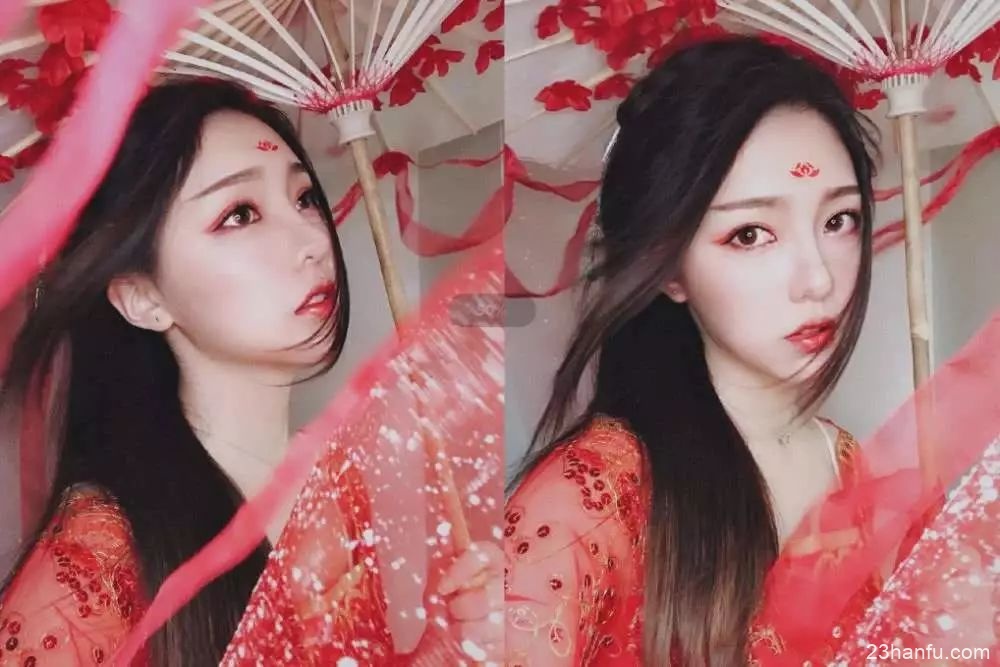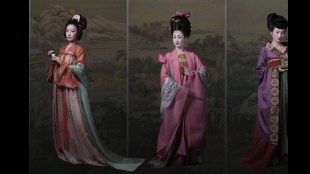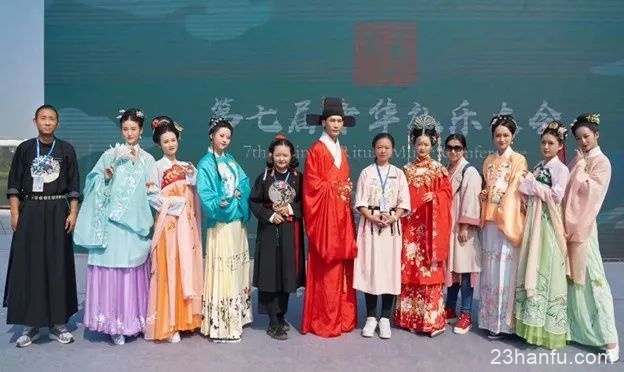不知道你是否注意到了,近几年,穿汉服的人越来越多了。
城市中心区有人穿着汉服逛街,景区有人穿着旅游,就连课堂上也不乏汉服的身影。

CNN、路透社等外媒纷纷报道了这一汉服热。
Hanfu, meaning “Han clothing,” is based on the idea of donning costumes worn in bygone eras by China’s Han ethnic group. Some of the most popular styles are from the Ming, Song and Tang dynasties.
汉服意为“汉族的服饰”,也就是穿过去的汉族服装。汉服最流行的款式来自明朝、宋朝和唐朝。

图源:网络、中国装束复原小组
About three-quarters of hanfu customers are between 16 and 24 years old. Members of this generation often see it as a way to rediscover and engage with their country’s traditional culture.
大约四分之三的汉服消费者年龄在16至24岁之间。这一代人经常把汉服看作是重新发现和接触中国传统文化的一种方式。

汉服的样式也非常多。它的主要元素包括腰带、设计复杂的领子等等。
The main features of hanfu include collars, upper garments in the style of a skirt, jade ornaments and a sash, according to Wen Run, professor of textile design and industrial economics at Donghua University.
东华大学纺织学院纺织品设计与产业经济系教师温润称,汉服的主要特征包括领子、裙状上衣、玉饰和腰带。
Materials such as brocade and yarn, along with traditional craftwork, including embroidery, are also hallmarks of the attire.
织锦缎、纱线等材料,以及刺绣等传统工艺也是汉服的标志性特征。

图源:中国装束复原小组
CGTN的文章认为,现代年轻人能从穿汉服中寻到传统文化之美。
It has seen a resurgence in recent years, despite some initial public resistance. It’s pretty exciting to see young Chinese people building up their self-confidence and developing their individuality to show the world what they love. For more Chinese, this dress code might become a good starting point to further explore the beauty of the country’s traditions.
近年来,尽管最开始有反对的声音,但汉服仍然流行了起来。看到中国年轻人树立自信,发展个性,向世界展示他们的热爱,这是颇令人兴奋的事。对于更多的中国人来说,这一着装可能会成为进一步探索中国传统之美的一个良好起点。
汉服的爱好者们表达自己喜爱的方式不尽相同,有人写了一本书,有人上课也穿。爱好者之间会互称“同袍”。
Yang Na is one of those hanfu enthusiasts who have been dedicated to the revival of the costume for over a decade. As a media professional, she wears hanfu, talks about it and has even written a book about it, titled “Hanfu Returns.”
杨娜是一位汉服爱好者,她致力于汉服的复兴已经超过十年。作为一名媒体从业人士,她穿汉服,聊汉服,甚至还写过一本书,书名是《汉服归来》。
Song Xuan, a student from Harbin, in northeast China’s Heilongjiang Province said, “hanfu is my daily outfit. In the summer, I wear it just like this. In the winter, I’ll put a warm sweater inside and a down coat outside.
来自中国东北黑龙江省哈尔滨市的学生宋璇说:“汉服是我每天的行头。夏天,我就这样穿。冬天,我会在里面穿一件暖和的毛衣,外面穿件羽绒服。”

Hanfu enthusiasts refer to themselves online as tongpao, which literally means wearing the same type of gown as a symbol of comradeship.
汉服爱好者在网上称自己为“同袍”,这个词字面意思是“穿着同一种衣服”,象征着同志情谊。

2020年3月,穿着汉服逛北京玉渊潭公园的女孩们 摄影:中国日报记者 邹红
汉服文化的兴起也带动了经济的发展。2018年的数据就显示,当年的汉服市场就已经超过了10亿元。有的汉服爱好者每年花在汉服上的开销就有3000-5000元。
有趣的是,《长江七号》里的演员徐娇自己创立的汉服店在2018年就卖出了价值1000万的汉服。

There were more than 2 million hanfu enthusiasts in China in 2018, according to a survey by the market consultancy iMedia Research, a year-on-year rise of nearly 73 percent. The total value of the hanfu industry exceeded 1 billion yuan.
据市场咨询机构iMedia Research的调查,2018年中国汉服爱好者超过200万人,同比增长近73%。汉服产业总产值超过10亿元。
Deng, who also joined a hanfu club at her high school, said she spends about 3,000 yuan to 5,000 yuan ($432 to $720) on the attire every year.
高中时就加入汉服俱乐部的邓小姐,说她每年在汉服上的花费大约在3000元到5000元(约合432到720美元)。
Hanfu company Zhiyuji, founded by actress Xu Jiao in 2016, did over RMB 10 million ($1.4 million) in sales in 2018.
由演员徐娇于2016年创立的汉服公司在2018年销售额就超过1000万元人民币(约合140万美元)。
汉服的复兴不仅是在中国,更是延伸到了国界之外。越来越多的外国友人也开始沉迷汉服。
As the main organizer of the association, Li Siting, president of the Hunan Hanfu Culture Promotion Association, often communicates with her counterparts from different places. Last November, she attended the 7th Chinese ritual and music conference in Wuhan, the capital of Hubei province, which was the first time she met overseas Chinese culture lovers from Japan, France, Argentina and other places.
湖南汉服文化促进会会长李斯婷是协会的主要组织者,她经常与各地同行交流。去年11月,她参加了在湖北省会武汉举行的第七届中华礼乐大会,这是她第一次见到来自日本、法国、阿根廷等海外地区的中华文化爱好者。

图源:网络
还有一位文化人物与汉服相关。他就是词作者方文山。他牵头发起了在浙江嘉兴嘉善西塘镇举办的汉服文化周。

“Hanfu is the perfect bridge for young people to connect with Chinese culture and identity,” said Fang Wenshan, a lyricist who started the Hanfu Culture Week in Xitang seven years ago.
七年前在西塘创办汉服文化周的作词家方文山说:“汉服是年轻人与中国文化以及中国身份联系的完美桥梁。”
汉服热并不是没有争议。其中之一就是到底该叫“汉服”还是“华服”——后者据称更能涵盖“中国传统服装”这一范围。
不过,正如CGTN的文章里说到的,汉服的兴起纵使伴随争议,但也的确为现代街头增添了一抹传统的亮色。

图源:汉服荟
After 16 years of development from the so-called “fantastical dress” to daily attire, hanfu has been through quite the change in status.
经过16年的发展,汉服从所谓的“奇装异服”到日常着装,经历了相当大的地位变化。
Whatever the controversies behind the new trend, some traditional beauty on modern streets will indeed add a bit of vitality and diversity to urban life.
不管这股新潮流背后有什么争议,现代街道上出现一些传统美确实会给城市生活增添一点活力和多样性。
Note

bygone /ˈbaɪɡɔːn/ adj 很久以前的;以往的
sash /sæʃ/ n 腰带;饰带
brocade /brəˈkeɪd/ n 织锦缎
yarn /jɑːrn/ n 纱线
embroidery /ɪmˈbrɔɪdəri/ n 绣花;刺绣图案;刺绣品
hallmark /ˈhɔːlmɑːrk/ n 特征;特点




